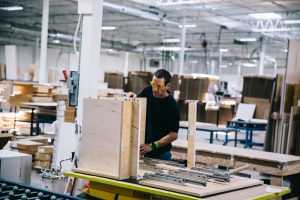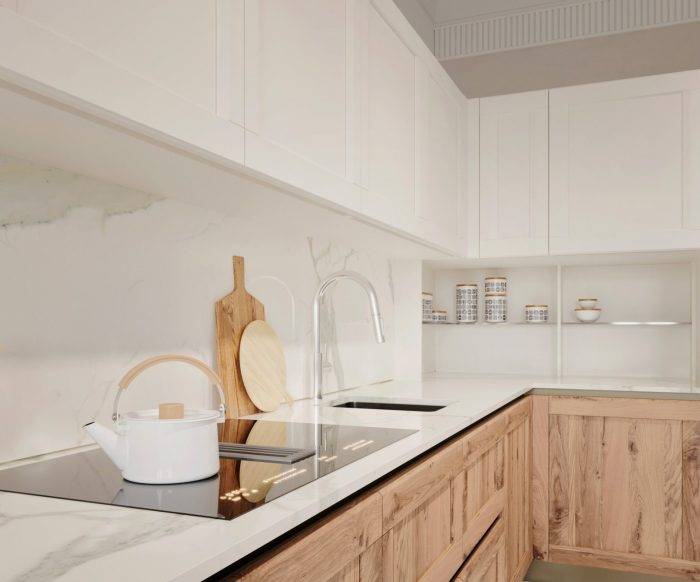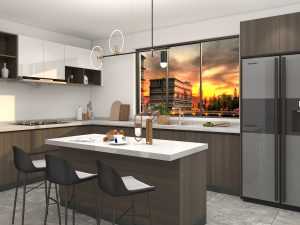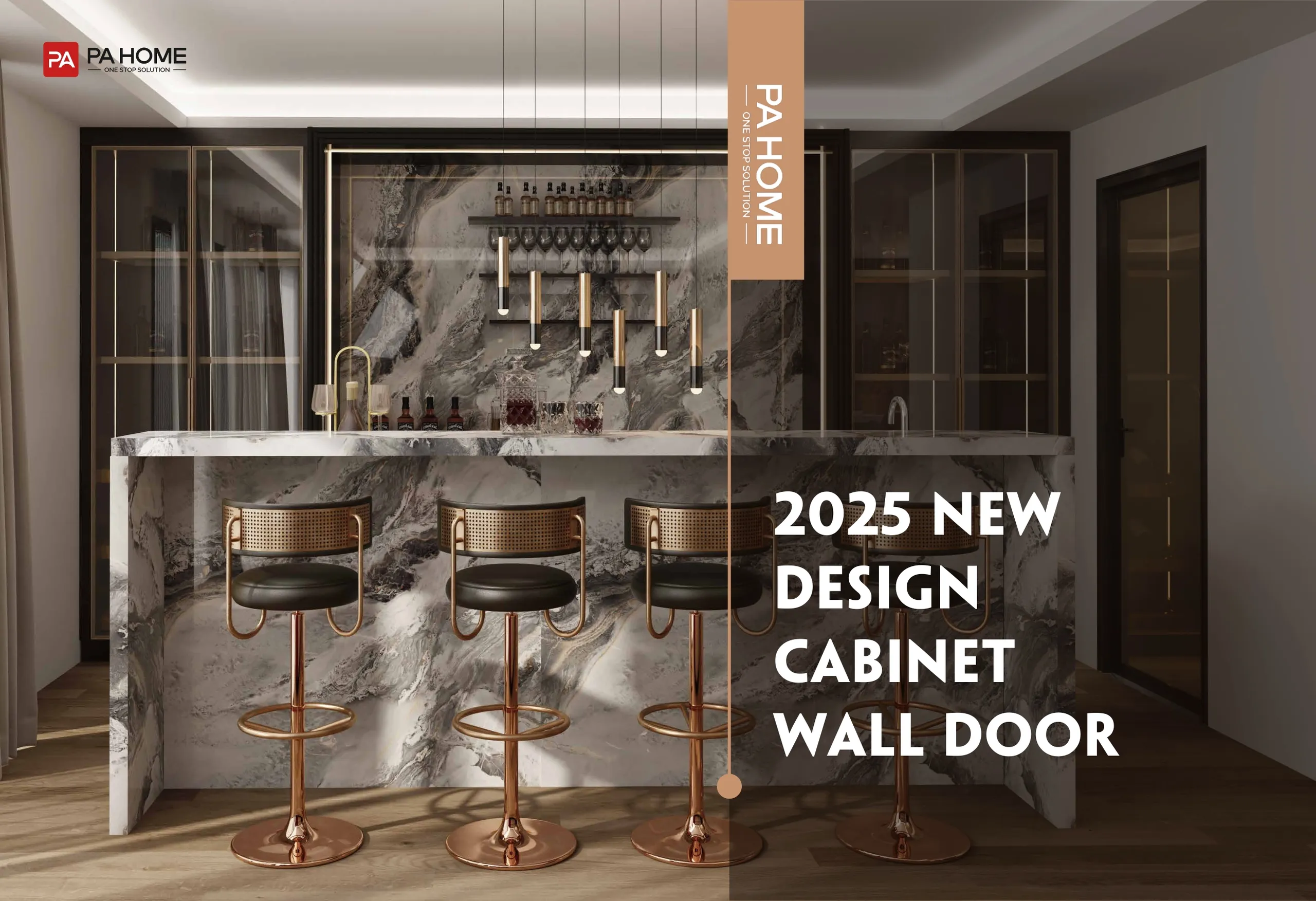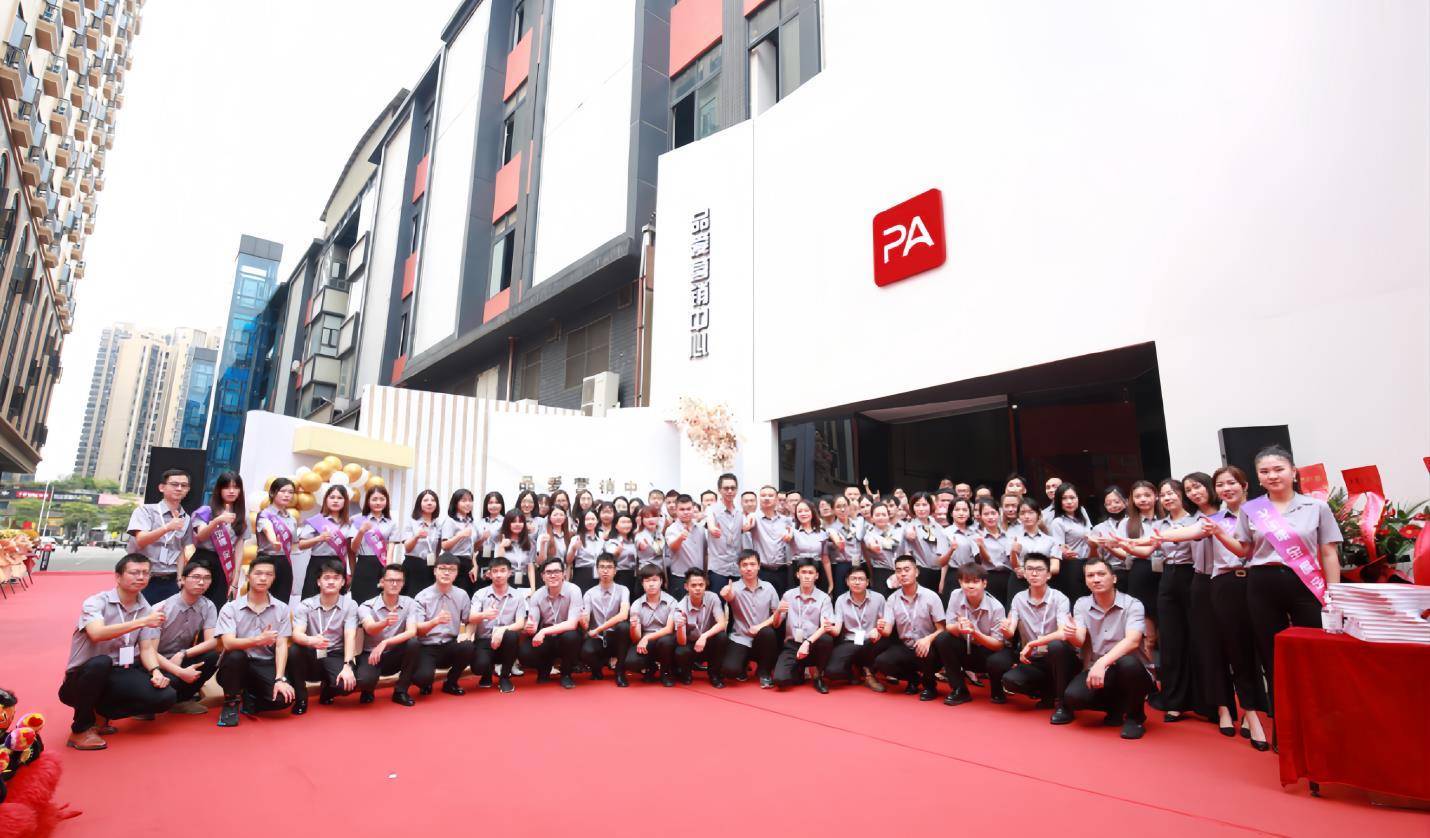In the bustling commercial world, the storefront is a unique business card of the store, standing quietly on the street, conveying the store’s style and quality to every customer. It is not only a passage for entering and exiting, but also an important part of the store’s image, playing a vital role in attracting customers and ensuring safety.
What do you need to know when buying the storefront doors for your commercial projects? Read this complete buying guide of stroefront doors!
1. What is a Storefront Door?
A storefront door is the primary entrance to a commercial establishmen, typically located on the ground floor or street level. A storefront door is a functional interface that separates and connects the interior and exterior of a building. It serves as the first point of contact between customers and the brand, playing a crucial role in the overall customer experience.
Unlike standard residential doors, storefront doors are designed to meet specific requirements.
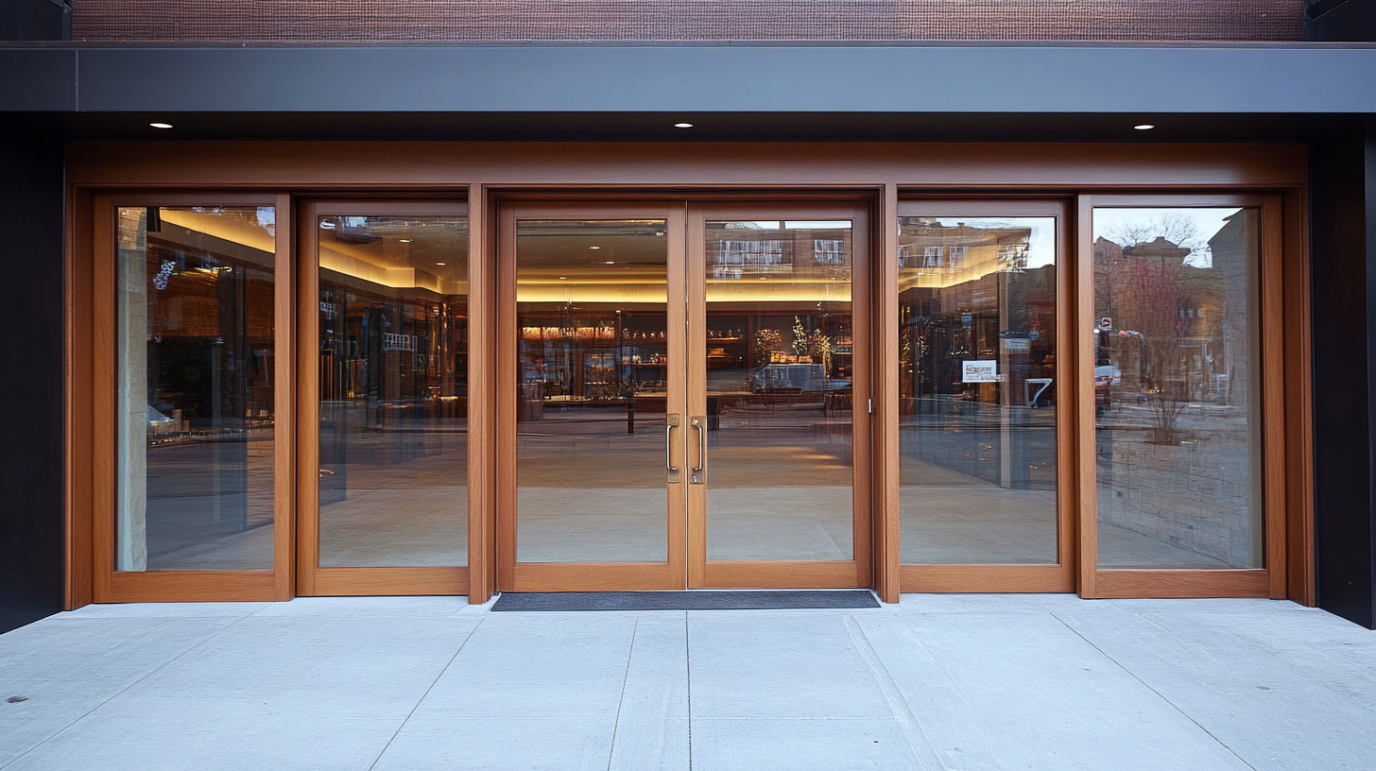
Key Functions of Storefront Doors:
Accessibility: Storfront doors facilitate easy entry and exit for customers and staff, often incorporating features like automatic openers to accommodate all individuals, including those with disabilities.
High Traffic Volume: Storefront doors are built to endure frequent use, often opening and closing hundreds of times daily to accommodate the flow of customers.
Enhanced Security: Commercial Storefront doors are designed with robust materials and advanced security features to resist theft and damage, ensuring the safety of the premises during non-business hours.
Brand Image Conveyance: The materials and design of the storefront door communicate the business’s brand image, creating an impression of quality and professionalism before customers even step inside.
A curtain wall door is part of a building’s exterior facade, often used in high-rise buildings with large glass panels and a metal frame. It is non-structural and designed for modern aesthetics and natural light.
A storefront door, typically used for retail spaces, is the main entrance to a business. It focuses on accessibility, security, and high-traffic use. Storefront doors are often made of glass, aluminum, or steel, and are designed for durability and easy operation.
In short, curtain wall doors are part of a building's overall structure, while storefront doors are designed for customer access and security.
2. What are the Types of Storefront Doors?
When selecting a storefront door, the type you choose can have a significant impact on your business’s functionality, security, and overall aesthetic. Different types of doors are suited for different needs, and understanding their advantages is key to making an informed decision.
Swinging Doors (Hinged Doors)
Swinging doors are a traditional option, typically found in smaller businesses. They open inward or outward with a simple push, making them a cost-effective and versatile choice. Though they work well for moderate foot traffic, they may not be ideal in high-traffic areas where automatic operation is preferred. However, their classic design can enhance the charm of certain storefronts.
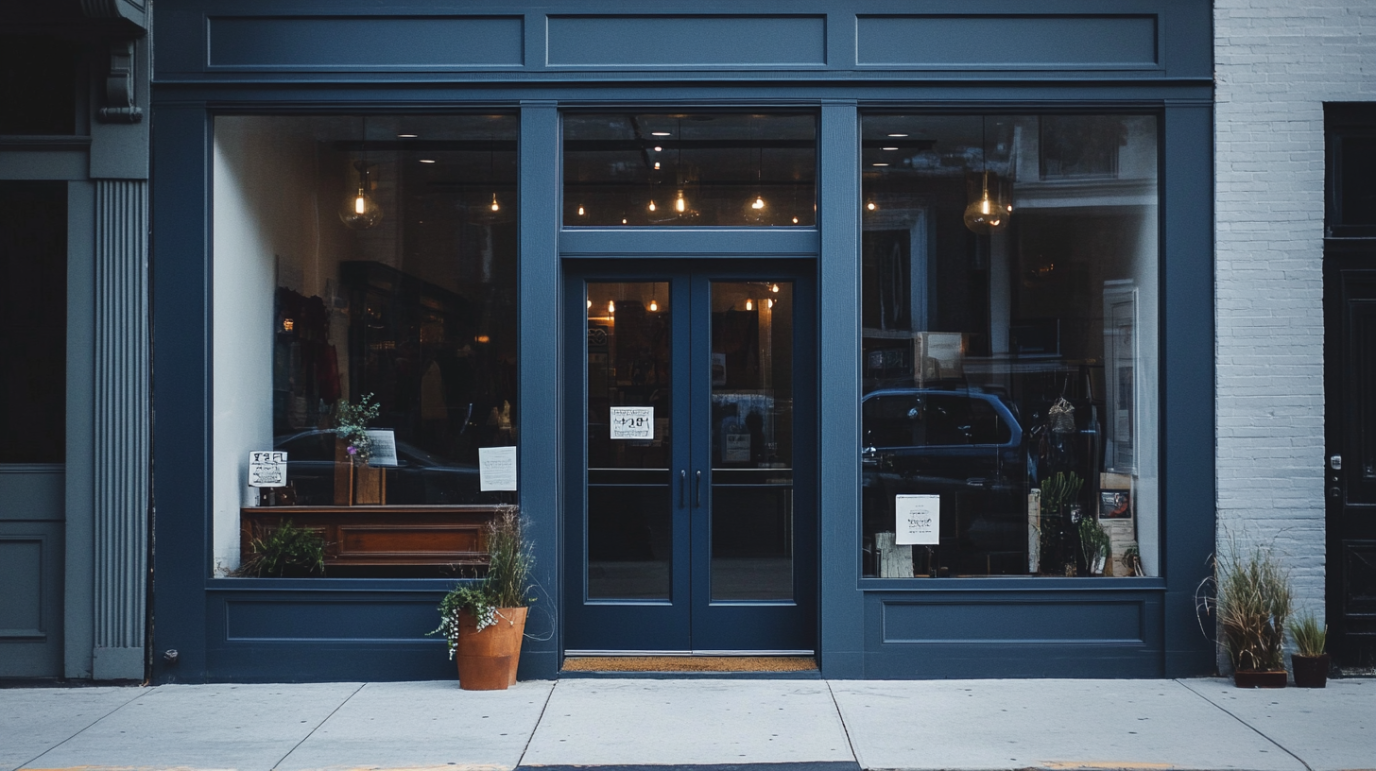
Sliding Doors
Sliding doors are ideal for businesses with limited space or high foot traffic. They glide horizontally along tracks, saving space and allowing for smooth and effortless entry. Often seen in shopping centers and retail environments, these doors can be automatic, offering hands-free operation for customers. While they tend to be a bit pricier than hinged doors, their functionality and space-saving design make them a popular choice.
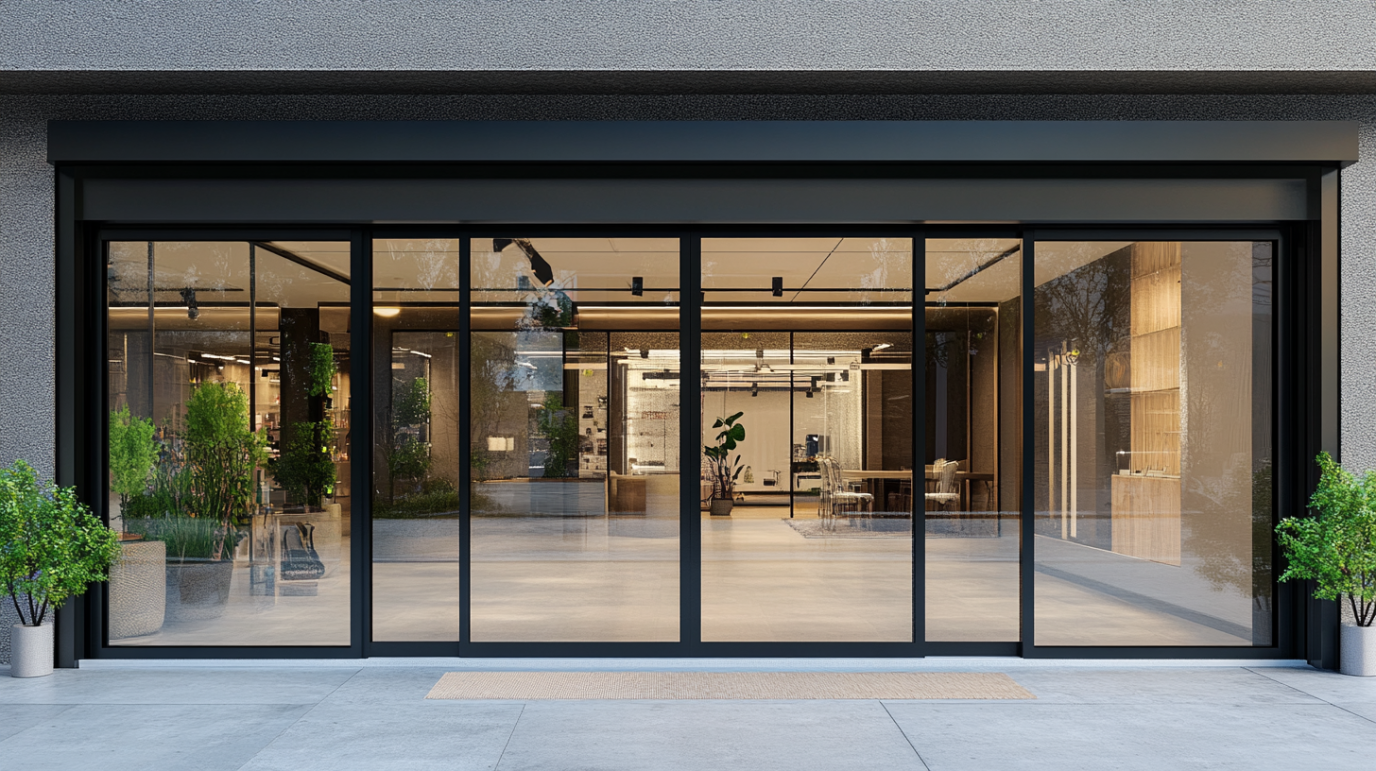
Revolving Doors
Revolving doors are often found in high-traffic locations such as hotels, airports, or office buildings. They offer a continuous flow of people while minimizing air exchange between the interior and exterior, making them energy-efficient. While revolving doors are excellent for controlling traffic and reducing energy loss, their higher installation costs and maintenance needs may make them less suitable for smaller businesses.
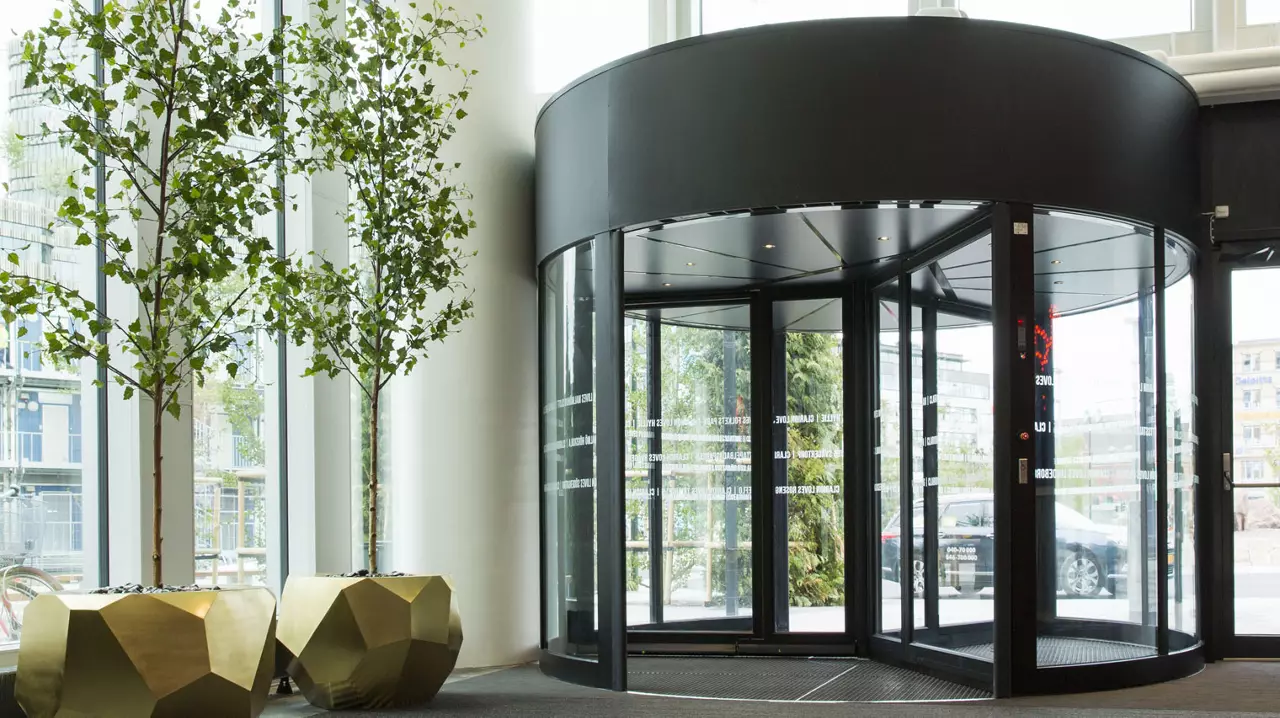
Rolling Shutter Doors
Rolling shutter doors provide excellent security and protection, typically used in areas where safety is a primary concern. Made from interlocking metal slats, these doors roll up and down and are commonly found in businesses with valuable products or those operating after hours. While they offer strong security, rolling shutters are less visually appealing for storefronts focused on product display and customer engagement.
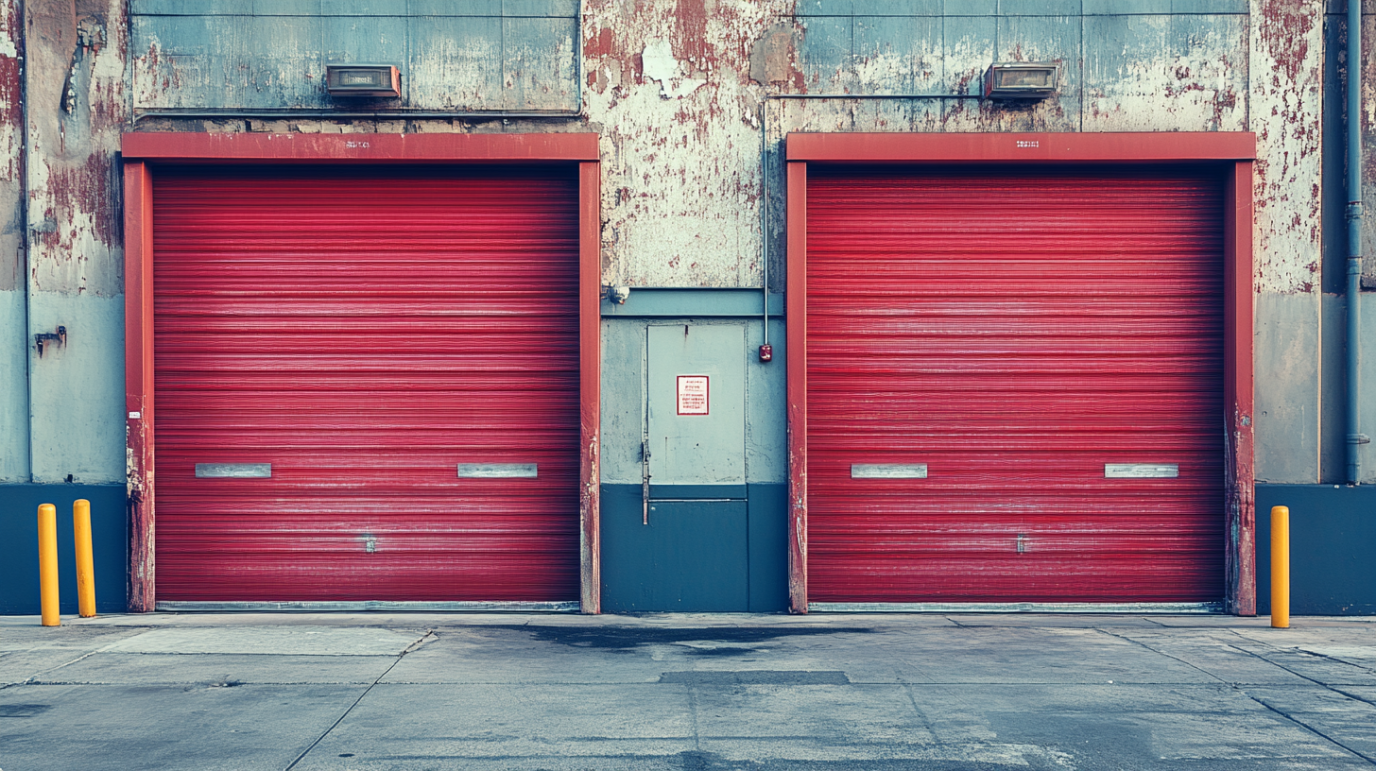
Agricultural Overhead Doors
Agricultural overhead doors are large, industrial-style doors that open overhead. These doors are ideal for businesses with large equipment or for service centers that need big openings. They are incredibly durable and can withstand heavy use, but they are typically more suited for industrial or agricultural settings rather than retail environments due to their more utilitarian design.
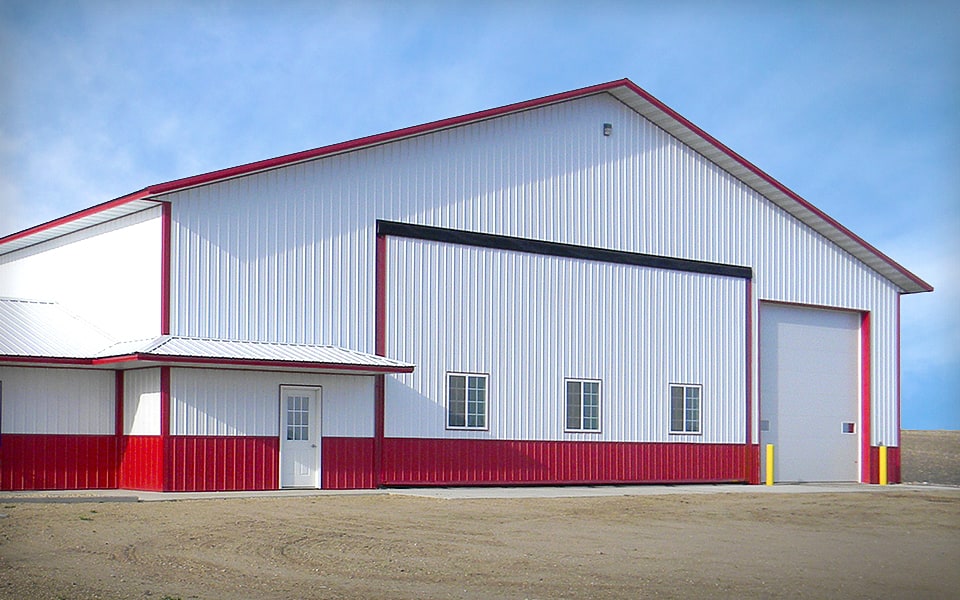
Automatic Doors
Automatic doors are often chosen for businesses that prioritize convenience and accessibility. These doors open automatically when motion is detected, offering a hands-free entry experience for customers. They are commonly found in supermarkets, hospitals, and other high-traffic areas. Although automatic doors come with higher upfront costs, their convenience, security, and ease of use make them an attractive option for modern businesses.
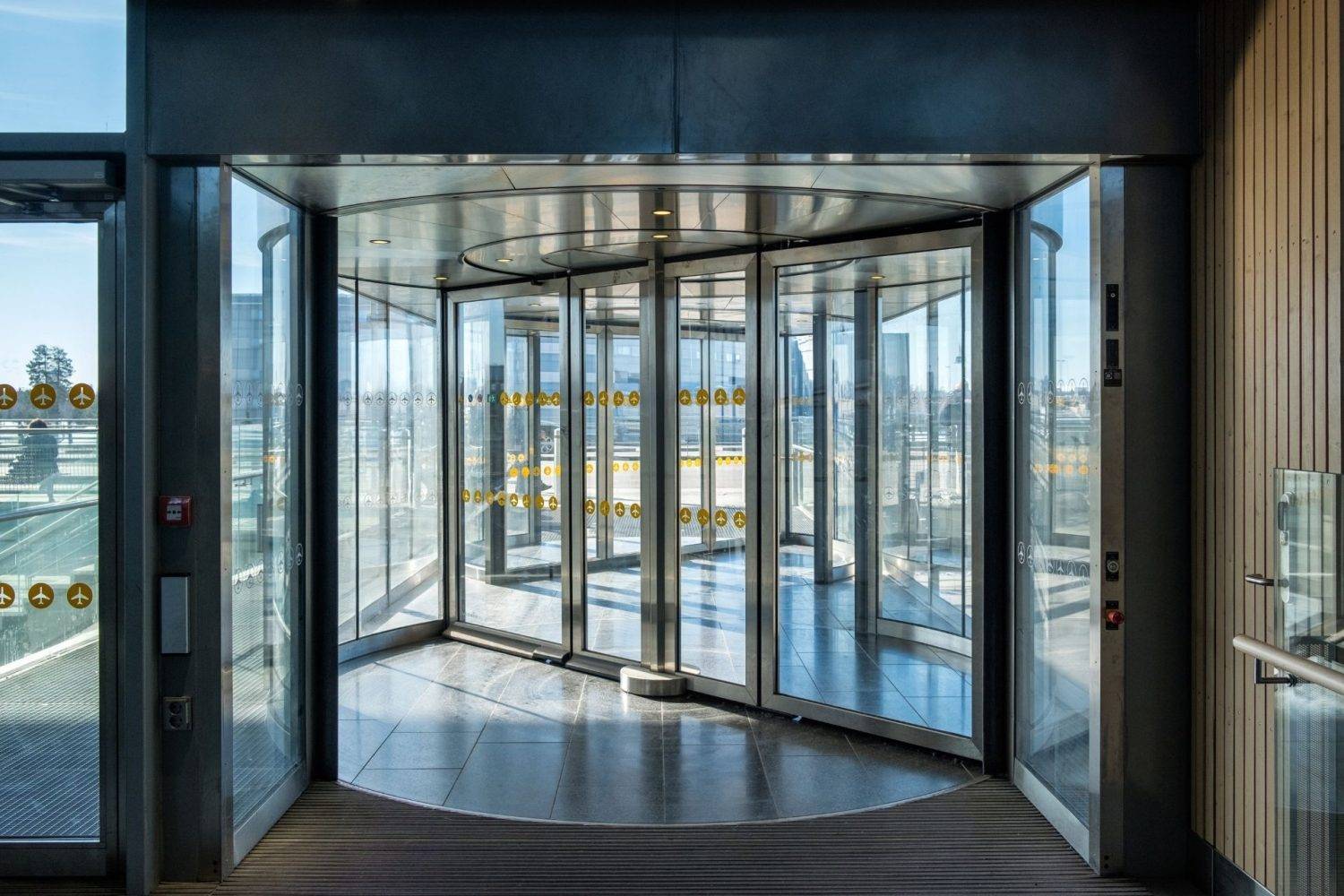
Pivot Doors
While pivot doors are often seen in luxury residences or high-end commercial spaces, they may not be the best option for high-traffic storefronts, as they can be heavier and require more effort to open compared to automatic or sliding doors. Instead of using traditional hinges, pivot doors rotate on a central pivot point, which allows for larger doors with fewer restrictions. These doors often make a strong visual impact and are popular in high-end commercial spaces, luxury boutiques, and galleries. If your business is looking for something distinctive that stands out, a pivot door could be a statement piece.

3. What are the Materials of Storefront Doors?
When selecting a storefront door, the material plays a crucial role in determining the door’s durability, functionality, and appearance. Each material has its unique advantages depending on your business’s needs, such as visibility, security, and cost-effectiveness.
| Material | Features | Best For | Cost |
|---|---|---|---|
| Glass | Transparent, enhances visibility and engagement. | Retail stores, showrooms, cafes. | High |
| Aluminum | Lightweight, durable, corrosion-resistant. | Modern storefronts, offices. | Medium |
| Steel | Strong, secure, ideal for high-security needs. | High-security businesses (banks, warehouses). | High |
| Wood | Classic look, customizable, but requires upkeep. | Hotels, traditional offices, rustic businesses. | Medium |
| PVC | Affordable, weather-resistant, low-maintenance. | High-traffic areas, cost-effective solutions. | Low |
| Composite | Durable, strong, and aesthetically appealing. | Businesses needing strength and style. | Medium |
Both glass and aluminum storefront doors have their advantages:
- Glass Storefront Doors: Offer better visibility and aesthetics, perfect for showcasing products and attracting customers.
- Aluminum Storefront Doors: Known for durability, low maintenance, and better security, making them ideal for high-traffic areas or extreme weather conditions.
For a combination of durability and aesthetics, consider aluminum glass storefront doors, which offer both strength and a modern, transparent look.
4. Door Size and Customization Needs
Choosing the right size and design for your storefront door is crucial to ensuring it meets both functional and aesthetic needs. While standard-sized doors work for many businesses, custom doors offer a better fit for unique spaces and specific requirements.
Standard vs. Custom Sizes
- Standard Sizes: For most businesses, standard doors typically have a width of 900-1200mm and a height of 2100-2400mm. These sizes are cost-effective and readily available.
- Custom Sizes: Perfect for businesses with irregular openings or specific design needs, custom doors allow you to choose the exact dimensions and style that fit your space. The typical custom door manufacturing time is around 4-6 weeks.
To find the best manufacturers for customizing shopfront doors, follow these tips:
- Research: Look for experienced manufacturers with good reviews and portfolios.
- Customization Options: Ensure they offer a variety of materials, finishes, and features.
- Request Samples: Ask for examples of past custom work to assess quality.
- Get Quotes: Compare pricing and options from multiple manufacturers.
- Customer Support: Choose a manufacturer with reliable customer service and warranty options.
- Ask for Recommendations: Seek advice from other business owners or industry professionals.
These steps will help you find the right manufacturer for your needs.
Aesthetic and Functional Customization
Custom storefront doors can also be tailored to match your brand’s image. This includes choosing materials (glass, wood, metal) and finishes that reflect your business’s identity. You can also select specific features such as:
- Glass Options: Clear, frosted, or tinted glass for privacy or visual appeal.
- Hardware: Custom handles, locks, and hinges to enhance security and functionality.
- Automatic Features: For businesses with high foot traffic, automatic doors or larger openings can improve accessibility.
- Branding Opportunities: You can enhance the door’s appearance by integrating LED light strips or your business logo onto the door frame, though this may increase the customization cost by 20%-30%.
By opting for a custom door, you ensure it not only complements your building’s design but also meets your operational needs while providing opportunities to reinforce your brand’s identity.
5. Evaluating Security Features
Ensuring the security of your storefront is paramount.
When evaluating the security features of storefront doors, laminated glass should be considered first. Laminated glass consists of multiple layers of glass and an interlayer of film. Even if it breaks, the fragments will be stuck to the film, enhancing security.
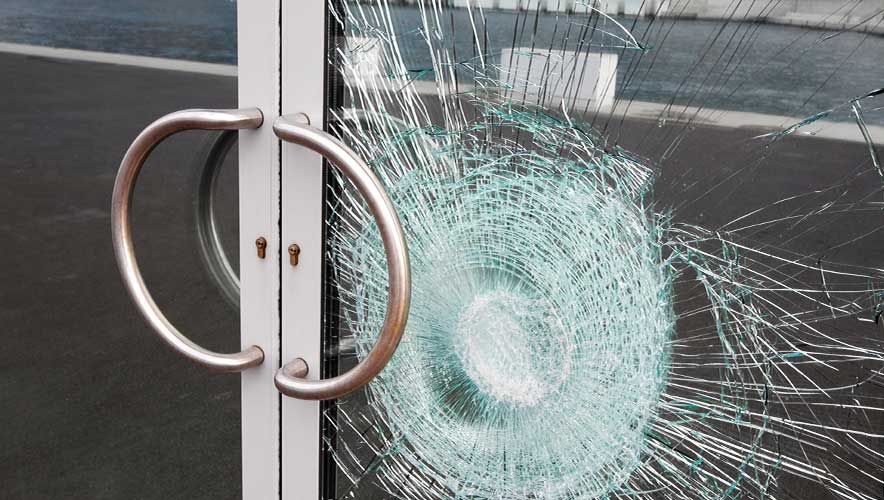
Second, integrating smart protection systems, such as face recognition or fingerprint locks, and ensuring compatibility with building security systems can further enhance the security level. These systems restrict unauthorized entry and sound alarms in abnormal situations.
In addition, ensuring that the design of doors meets barrier-free requirements and facilitates the entry and exit of people with disabilities is an important aspect of meeting social responsibility and regulatory requirements.
Finally, the setting and unobstructed access of emergency exits are crucial to ensure the safety of personnel. According to building codes, each building or its usable part should have at least two exits to enable rapid evacuation of personnel in an emergency. These exits should be set as far apart as possible to prevent fire or smoke from blocking one exit while the other exit is still available. The doors of emergency exits should meet specific size requirements, such as a width of not less than 3 feet and a height of not less than 6 feet 8 inches. In addition, the door should be able to open at least 90 degrees to ensure unobstructed evacuation routes.
6. Ensuring Compliance with Energy Efficiency Standards
Ensuring that storefront doors meet energy efficiency standards not only helps reduce operating costs, but also improves the environmental performance of the building.
ENERGY STAR® Certification
Opt for doors and windows with ENERGY STAR® certification. These products meet strict energy efficiency guidelines set by the U.S. Environmental Protection Agency, ensuring superior performance in reducing energy consumption.
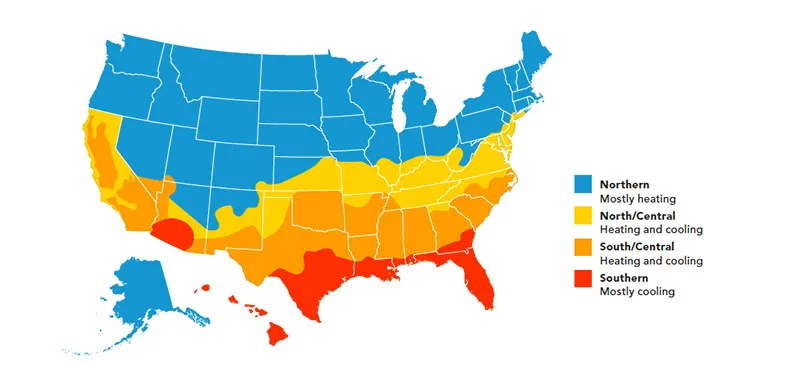
U-Value Specification
Specifically, the heat transfer coefficient (U value) of doors and windows should be controlled below 0.35 W/(m²·K) to ensure good thermal insulation performance. To further improve energy saving, it is recommended to use double-layer insulating glass filled with argon gas. Argon gas has a low thermal conductivity and can effectively reduce heat conduction and improve the thermal insulation performance of doors and windows.
Insulated Glass with Argon Gas Filling
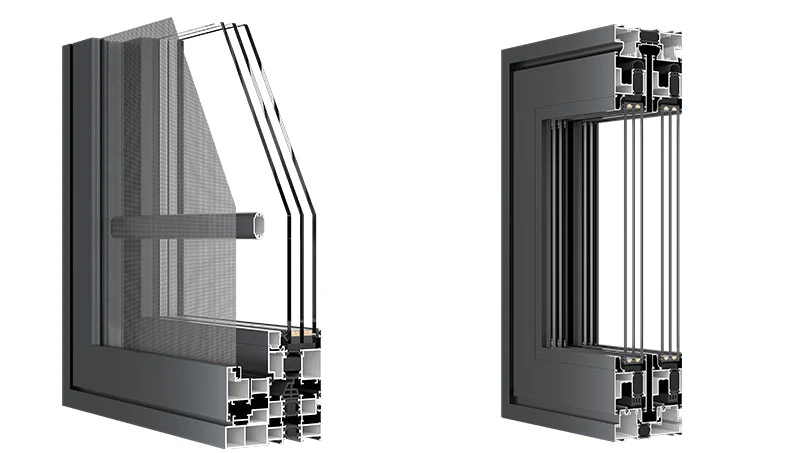
In addition, the choice of door frame material also has an important impact on energy efficiency. The thermal insulation coefficient of the door frame with a thermally insulated aluminum structure can be increased by about 40%. This design reduces the thermal bridge effect and enhances the thermal insulation performance of doors and windows by setting insulation strips between the inner and outer aluminum materials.
Thermally Broken Aluminum Frames with EPDM Seals
During the installation process, it is also critical to ensure that the doors and windows are sealed to the main body of the building. Using high-quality sealing strips, such as EPDM sealing strips, can effectively prevent air infiltration and further improve energy efficiency.
Choosing door and window products that meet national energy efficiency standards and paying attention to details such as U value, glass filling gas, frame material and sealing performance can significantly improve the energy efficiency of storefront doors and bring long-term energy-saving benefits.

7. Ensuring Compliance with Accessibility Design Standards
In order to ensure that the storefront door meets the strict standards of the ADA, it is recommended to avoid using spring doors with excessive operating force, especially all-glass doors should be equipped with obvious warning signs. The clear width of the automatic door after opening should be no less than 1.00 meters, the height from the ground should be between 900 and 1100 mm, and the response force should not exceed 2.2 kg. The holding time after the automatic door is opened: should be at least 5 seconds, and the closing speed should not exceed 30 cm/second.
The clear width of the swing door, sliding door, and folding door after opening should be no less than 815 mm, and it is recommended to be no less than 900 mm. The threshold height and the height difference between the ground inside and outside the door should not be greater than 13 mm, and the transition should be inclined to ensure smooth passage for wheelchair users.
In addition, the door leaf should be easy to open and close, and the operating force should not exceed 25 Newtons to facilitate the use of the elderly and people with limited mobility.
8. Regular Maintenance and Inspections of Storefront Doors
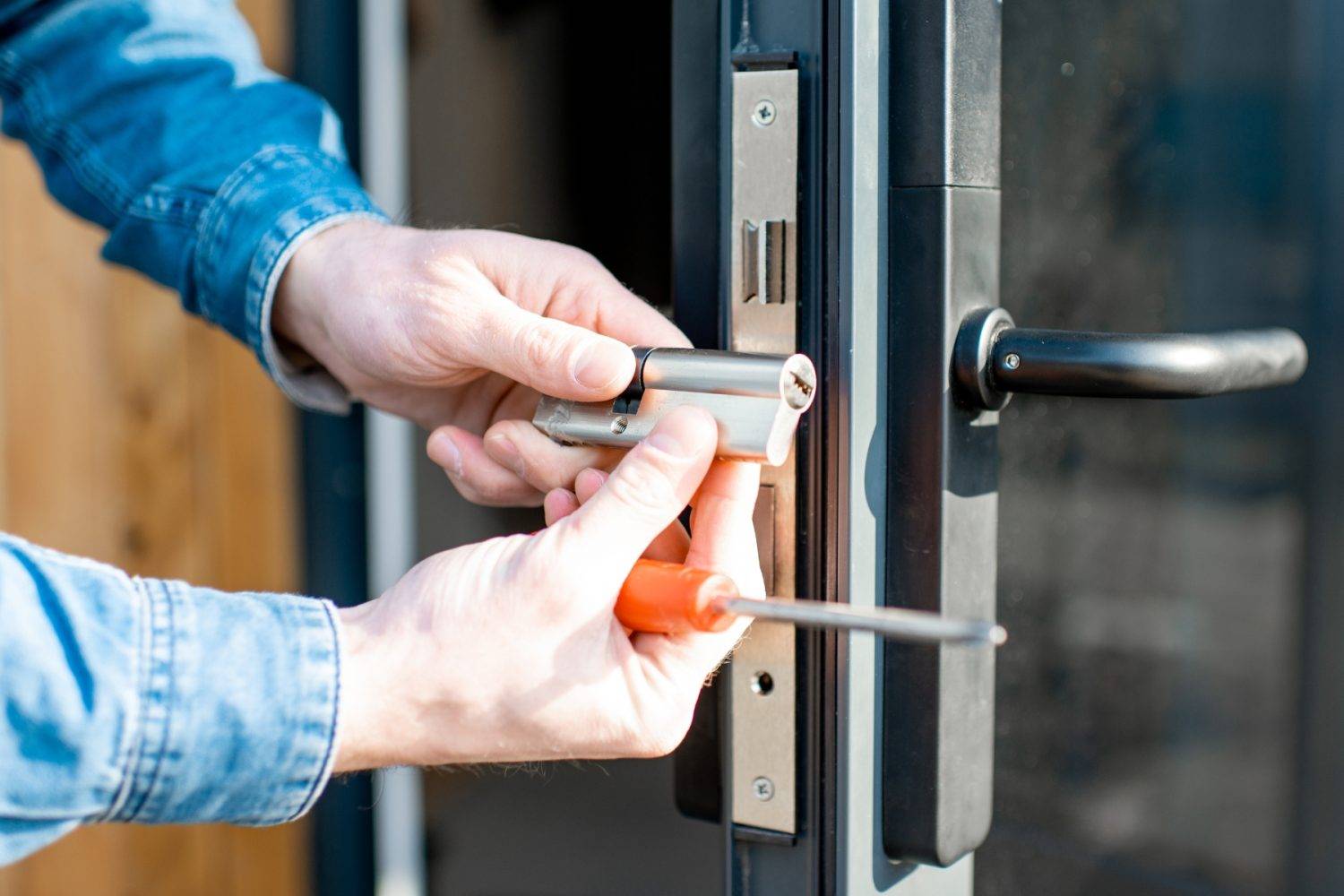
Regular maintenance and inspection of storefront doors are crucial to ensuring their safety, functionality, and longevity. Here are some key maintenance steps:
- Visual Inspection: Regularly check the door’s appearance for any signs of damage or wear, such as loose hardware, cracks, or deformation.
- Lubricating Moving Parts: Use the appropriate lubricant to regularly lubricate the door’s hinges, rollers, and tracks to ensure smooth operation and reduce wear.
- Checking Seals: Inspect the seals around the door to ensure they are intact, preventing air or moisture infiltration and maintaining energy efficiency.
- Cleaning the Door and Hardware: Regularly clean the door and hardware to remove dust and debris, preventing buildup that could affect functionality.
- Testing Safety Features: If the door is equipped with automatic features, periodically test the sensors and reverse mechanisms to ensure they are working properly.
It is recommended to conduct a comprehensive inspection at least quarterly and increase the frequency of checks for storefront doors with high usage. For repairs or adjustments that require specialized knowledge, it is advisable to seek assistance from certified technicians.
By following these maintenance steps, you can ensure the long-term reliability and safety of your storefront door, avoid unexpected failures, and create a safe and comfortable environment for both customers and employees.
9. Budget and Cost-Benefit Analysis
When selecting storefront doors, it’s important to consider both the upfront costs and the long-term benefits. While doors made from materials like aluminum or glass may have a higher initial price, they offer durability and an attractive appearance that can enhance your storefront’s appeal. Additional features, such as automatic openers or security locks, will also contribute to the overall cost.
However, the real value comes from ongoing savings. Energy-efficient doors, like those with Low-E glass or better insulation, can significantly lower heating and cooling costs over time. Investing in security doors also reduces the risk of break-ins and can even lower insurance premiums. Ultimately, evaluating both initial and long-term costs helps ensure you make a smart investment that will benefit your business in the years to come.
The cost of a storefront door can vary widely depending on several factors, including the material, size, features, and customization options. On average, a basic storefront door typically ranges from $500 to $3,000. Here's a breakdown:
- Aluminum Doors: Between $1,000 and $2,500.
- Glass Doors: From $1,500 to $3,000, depending on standard or custom glass.
- Steel Doors: Typically between $800 and $2,500.
- Wooden Doors: Ranging from $1,200 to $3,000, depending on the quality and finish.
Additional costs for installation, security features, or automatic openers may apply. Customizations like energy-efficient glass, high-security locks, or branding elements can also increase the overall price.
Yes, automatic shopfront doors tend to be more expensive than manual doors. The additional cost is due to the installation of automatic sensors, motors, and electronic systems. However, they offer the convenience of hands-free entry, which is beneficial for high-traffic areas.
10. Top Storefront Door Manufacturers in the USA
Choosing the right storefront door manufacturer is key to ensuring quality, security, and durability for your business. The U.S. is home to several top manufacturers offering a variety of commercial door options tailored to different needs. Here are some of the best commercial storefront door companies.
1. Andersen

Andersen is a top manufacturer of windows and doors, headquartered in Bayport, Minnesota. They offer a wide range of products suitable for both residential and commercial applications.
2. YKK AP America
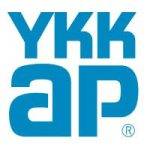
YKK AP America manufactures aluminum commercial storefront doorswith thermally broken designs, delivering energy efficiency suitable for various climate zones. Their products are known for structural strength and design flexibility.
3. Masonite

Masonite, headquartered in Tampa, Florida, manufactures both interior and exterior doors for residential and commercial markets. They are known for innovative designs and have a global presence.
4. Arcadia Inc.

Arcadia offers a robust selection of storefront products, including thermal and non-thermal systems. With 13 manufacturing locations across the U.S., they provide customized solutions for various commercial applications.
5. STANLEY Access Technologies

Specializing in automatic door systems, STANLEY provides storefront door solutions that are durable, secure, and ADA compliant. They offer both swing and sliding door options tailored to different business needs.
6. Special-Lite

Special-Lite manufactures highly durable fiberglass reinforced polymer (FRP) and aluminum commercial doors, suitable for new constructions and retrofits. They are recognized as one of the largest producers in the U.S.
7. Kawneer

Kawneer specializes in swing entrances engineered for durability and high performance in commercial and institutional buildings. Their heavy-duty aluminum framing is designed to withstand high-traffic demands.
8. Tubelite

Tubelite is one of top aluminum storefront door manufacturers in the USA. provides architectural aluminum entrances, storefronts, mid-rise curtainwalls, and operable windows. Their products are designed and tested for commercial construction, offering a variety of thermally improved systems.
9. Clopay Building Products

Clopay Building Products is one of the largest manufacturers of residential garage doors in North America and is also an important producer of industrial and commercial doors. The company operates more than 50 distribution centers and its product sales network covers the United States.
10. Commercial Door Manufacturing
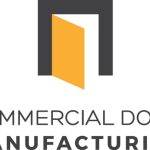
Commercial Door Manufacturing, located in Albuquerque, New Mexico, specializes in the production of commercial steel doors and door frames required for large construction projects. Their custom metal shop utilizes the latest sheet metal fabrication technology to quickly and efficiently meet complex custom needs.
Conclusion
In conclusion, selecting the right storefront door is crucial for your business’s security, energy efficiency, and aesthetic appeal. With various factors like material, size, and cost to consider, it’s important to choose a manufacturer that meets your specific needs.
PA Window, one of China’s top 10 door manufacturers, also specializes in aluminum commercial doors. If you’re looking for high-quality, durable aluminum storefront doors, PA Window is a great option to consider. Feel free to reach out to PA for your storefront door solutions.
FAQs
A garage door storefront is a type of commercial door designed to function like a traditional garage door but with a more aesthetically pleasing and functional design for storefronts. It’s typically used for retail businesses that need a large opening for easy access, such as car dealerships or businesses with delivery needs.
Yes, glass storefront doors can be secure when made with impact-resistant or laminated glass. The framing materials, such as steel or aluminum, can be reinforced with secure locking systems for added protection.
Yes, many manufacturers offer custom sizing to accommodate unique architectural features or specific functional requirements, ensuring the door fits seamlessly with your building’s design.
High-quality materials like reinforced glass or steel may have higher initial costs but often require less maintenance and offer greater durability, leading to cost savings over time.
Glass doors offer transparency and a sleek look, making them ideal for contemporary designs and businesses aiming to create an open, inviting atmosphere.
A commercial shop door is designed for various business types like offices and warehouses, focusing on durability and security. A storefront door, however, is specifically for retail businesses, made from materials like glass or aluminum, and emphasizes aesthetics and customer accessibility. In short, storefront doors are geared towards retail, while commercial shop doors serve broader commercial purposes.

